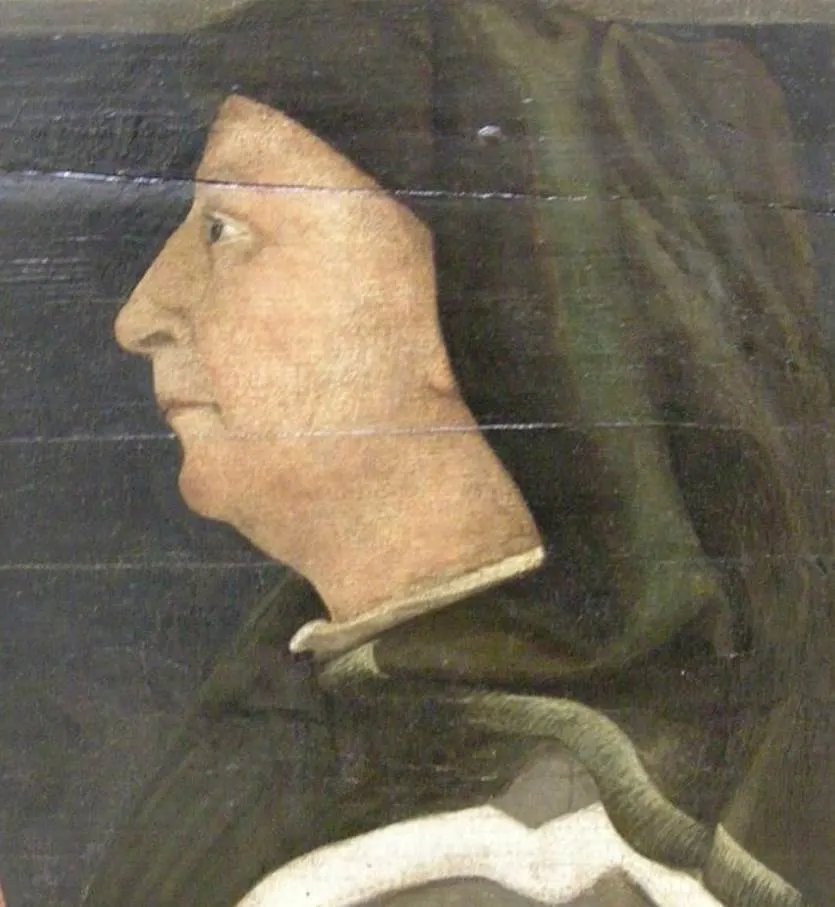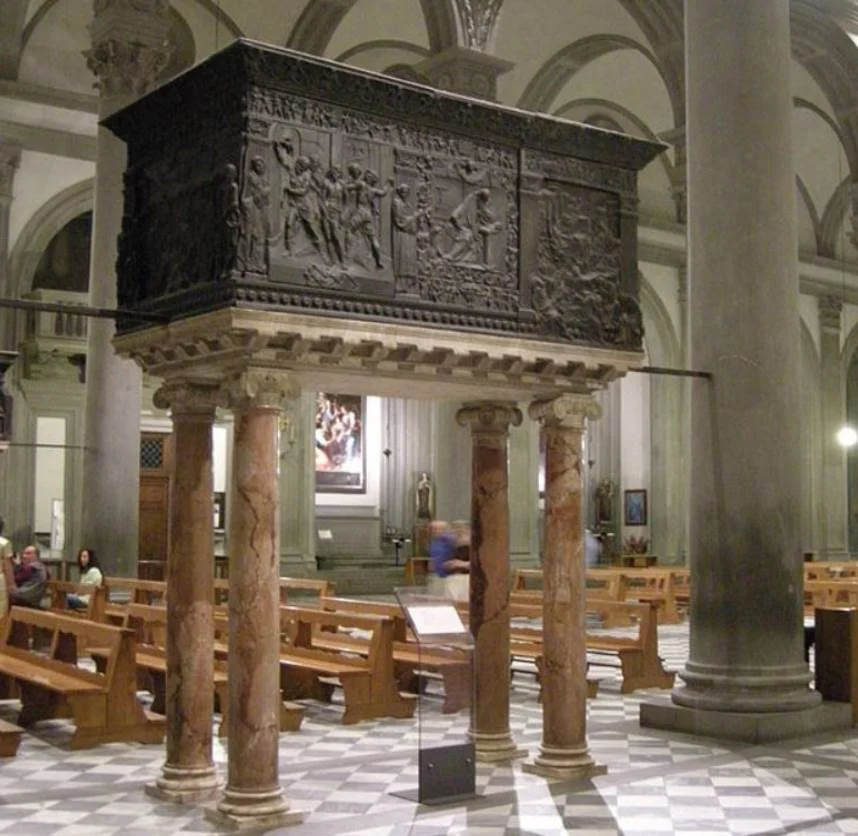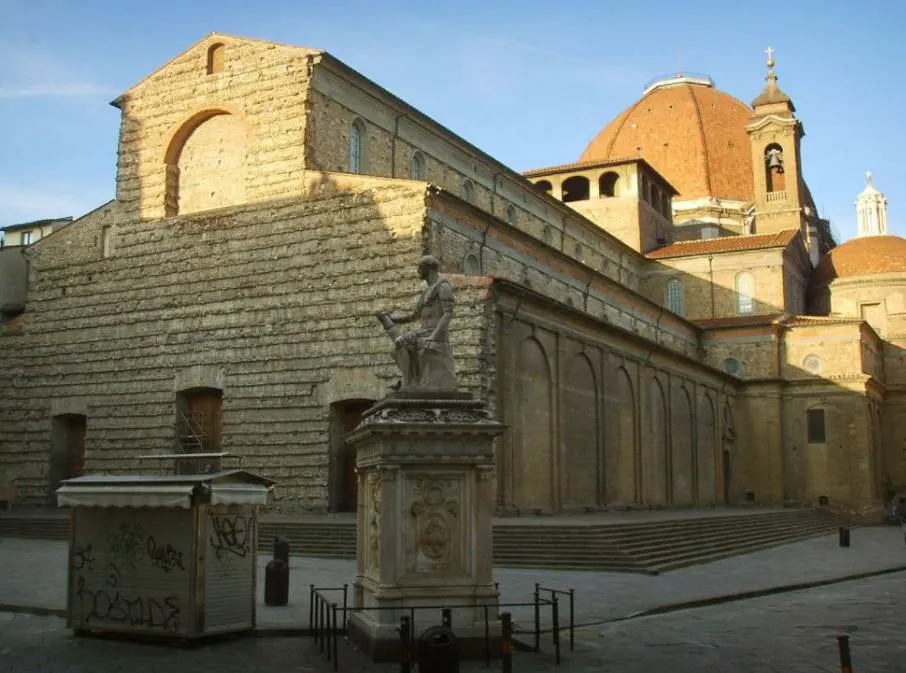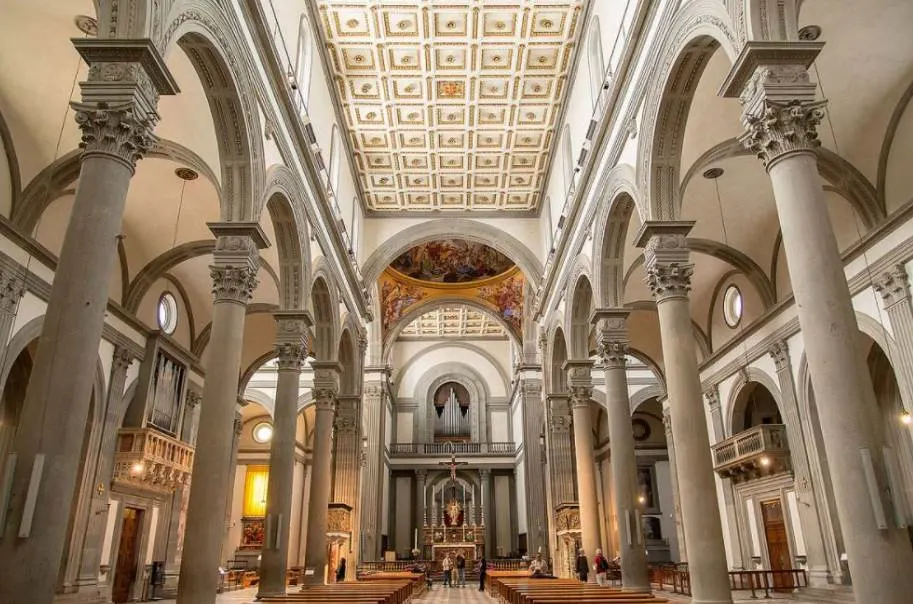The city of Florence in the Tuscany region of central Italy is one of the most amazing places to visit in the country. That’s because it’s home to some of the most revolutionary architectural structures in the world.
Some of the best examples of Renaissance architecture such as Florence Cathedral with its astounding dome and the Pitti Palace, the epitome of Renaissance palaces in the world, are just a few of the marvelous landmarks in the city.
In this post, we’ll take a closer look at some of the most interesting facts about the Basilica of San Lorenzo in Florence, a fascinating church with a remarkable history!
1. It’s situated in the central market district of the city
The Basilica of San Lorenzo is situated in the heart of the capital of the Tuscany region in Italy. The Arno River flows just a few hundred meters to the south of this magnificent structure
The river can be crossed via the Ponte Vecchio to reach the magnificent Pitti Palace, but not before passing by the Piazza della Signoria and the iconic Palazzo Vecchio, the town hall of Florence.
What’s remarkable is that the main church in the city, the “Cathedral of Santa Maria del Fiore,” better known as “Florence Cathedral,” is located just to the southeast as well. Both landmarks in Florence have a similar distinctive red-brick dome.
What an amazing place, right?

2. It’s claimed to be the oldest church in Florence
Florence has been a center of Christianity ever since Roman times and multiple cathedrals were built during the early stages of the religion. The Basilica of San Lorenzo was consecrated in the year 393 A.D. and this original church stood just outside the ancient city walls.
The church in this location was the main cathedral of Florence and the official seat of the bishop for over 300 years. It held this title until the Santa Reparata Cathedral was built, the original church on the location of Florence Cathedral.

3. The church was commissioned by an important Florence family

The current church was commissioned in the year 1419 by the influential banking and political family called the “Medici’s.” This Renaissance building was to replace the 11th-century Romanesque church that occupied the site by then.
A lack of funding during the initial phase of construction seriously slowed down progress. This means that the church wasn’t completed until the year 1459 and the chapels alongside the aisles on the right were still in progress during the latter decades of the 15th century.
4. It was originally designed by a famous Renaissance artist
The basilica was a revolutionary structure in many ways. It was originally designed by Filippo Brunelleschi (1377-1446), the leading architect of the early Renaissance period and one of the most influential artists of the Renaissance.
Brunelleschi designed the enormous dome of Florence Cathedral, a structure that was completed between 1446 and 1461 and which was a remarkable feat of engineering on a scale that hadn’t been completed since Roman times.

5. Only one part was completed during the architect’s lifetime
Even though Florence Cathedral was largely completed following the original plans made by Brunelleschi, the Basilica of San Lorenzo had many alterations by other architects following his death in the year 1446.
It’s assumed that the church was either completed by Antonio Manetti or Michelozzi, two other renowned architects at the time, but historians remain uncertain who of the two did.
The only part of the Basilica that was completed during Brunelleschi’s lifetime was the so-called “Old Sacristy,” or “Sagrestia Vecchia” in 1440. This domed area is the oldest part of the church as well and features multiple tombs of prominent members of the Medici family.

6. The church is decorated with multiple works by Donatello
Brunelleschi isn’t the only Renaissance artist who worked on the church. Its interior is decorated with some of the most famous artists of the 15th and 16th centuries, including Bronzino, Verrocchio, and Donatello.
Bronzino painted a huge fresco on the north aisle called the “The Martyrdom of St Lawrence,” while Verrocchio designed the tombs of Giovanni and Piero de Medici in the Old Sacristry.
The highlights of the interior decorations are the works of early-Renaissance sculptor Donatello (1386-1466) which include friezes, reliefs, tondi, and bronze doors in the Old Sacristy. The church also features two bronze and marble pulpits in the central nave which were his last works of art, created in the 1460s!

7. It features a library that was designed by Michelangelo
The main building of the Basilica with adjoining Old Sacristy is just one part of the entire complex of the structure. Additional features include the New Sacristy, the Medici Chapels, and the Laurentian Library.
This historic library features over 11,000 manuscripts and over 4,500 old books which belonged to the Medici family’s private collection. The building was designed by Michelangelo and was integrated into the cloister of the Basilica.
Some of the most notable features of this library are the vestibule, the grand staircase which leads up to the library, and the reading room that was designed in an early-Mannerism architectural style.

8. Michelangelo designed another feature that was never completed
If you walk past this fascinating church, then the first thing you’ll notice is that the façade lacks any form of decoration. While this isn’t unusual for Renaissance cathedrals, think of Milan Cathedral of which the façade wasn’t completed until the early 19th century, This one remains unfinished until today.
This doesn’t mean that nobody ever commissioned its design, though! In 1518, Pope Leo X engaged Michelangelo to design the façade in white Carrara marble, and he even made a model carved in wood.
This wooden model still exists but only the interior façade was ever completed. The exterior remains untouched until today, even though plans to finish it have been on the table for a long time.

9. The interior of the Basilica was based on ancient Roman models
The pitiful exterior of the Basilica’s façade is copiously compensated with the magnificent interior design of the building. One of the most remarkable facts about the Basilica of San Lorenzo is that Brunelleschi designed it in a revolutionary way at the time, returning to classical models as opposed to the Gothic style which was popular back then.
The interior was designed using a series of Corinthian columns, bays, and arches, very similar to how ancient Roman basilicas such as, for example, the Basilica of Maxentius in Rome were designed.

10. It’s the burial place of numerous members of the Medici family
The final additions to the Basilica were the so-called “Medici Chapels,” or “Cappelle medicine,” to structures that were built against the main building of the Basilica on the righthand side.
One of these was designed by Michelangelo and is simply referred to as the “New Sacristy” or “Sagrestia Nuova.” This chapel was completed in the 16th century.
The larger of the two chapels is called the “Chapel of the Princes,” or “Cappella dei Principi,” and was only completed in the 17th century. From the exterior, its red brick dome which reaches a height of 59 meters (193 feet), dominates the entire structure.
Most of the members of the influential Medici family were buried in the Basilica, ranging from the man who commissioned the structure in 1419, Cosimo il Vecchio (1389-1464), to the penultimate Grand Duke of Tuscany, Cosimo III (1642-1723).
They were joined by some famous Italian artists as well, including sculptor Donatello, composer Francesco Landini, and goldsmith Bernardo Cennini, who are all buried inside the church.

